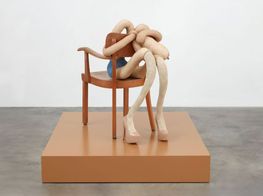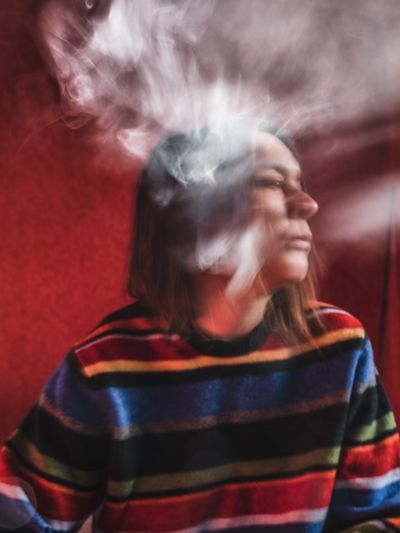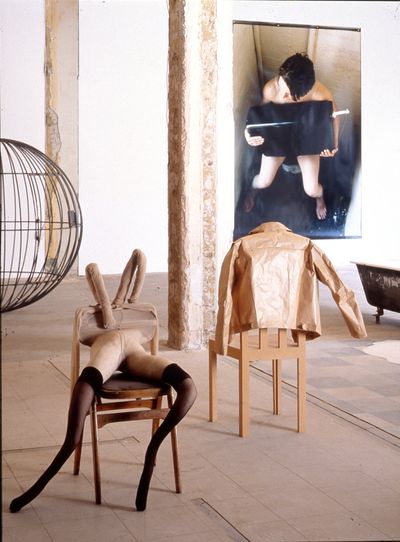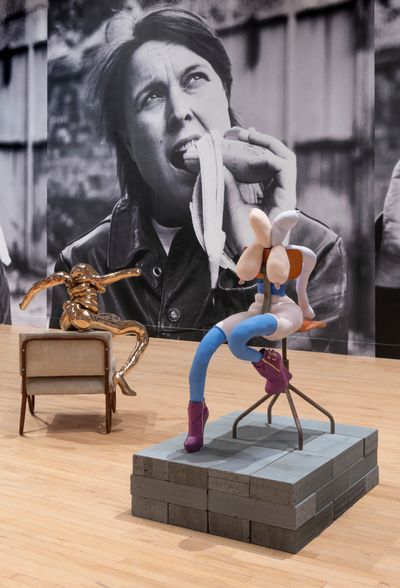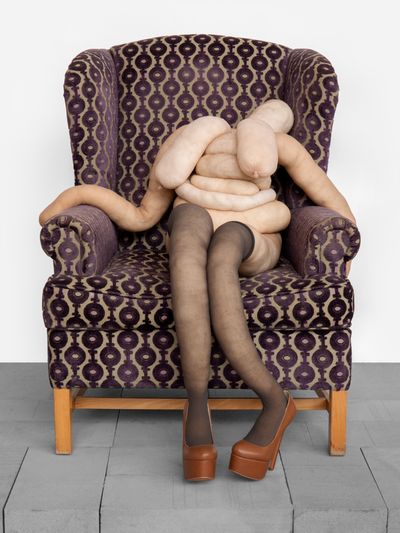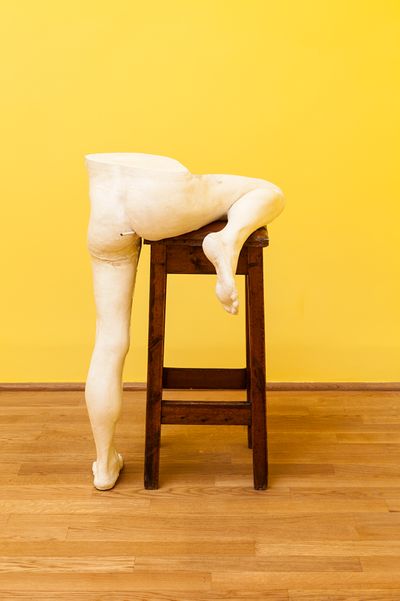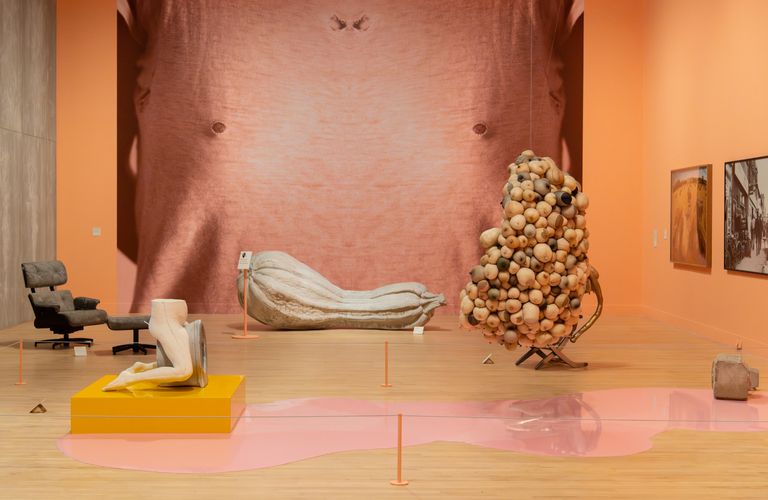
Sadie Coles on Sarah Lucas and Pioneering London’s Art Scene
Sadie Coles is one of the most renowned gallerists in the world. Known for her focus on emerging artists, and her early advocacy of the Young British Artists (YBA), Coles has helped shape the development of British contemporary art for over two decades.
Following her studies at Middlesex University, the London gallerist first landed a job at Arnolfini in Bristol before moving to Anthony d'Offay Gallery where she met Sarah Lucas who would eventually join her gallery, Sadie Coles HQ.
On the occasion of Lucas' exhibition, Happy Gas (28 September 2023–14 January 2024) at Tate Britain, Coles sits down with Ocula Advisor Rory Mitchell to discuss her first encounter with Lucas, London's thriving art scene in the 1990s, and the challenges facing young artists today.
When did you first meet Sarah Lucas?
I was at a gallery dinner and Sarah was there with her partner at the time, Gary Hume. We were all sitting at the kids' table, so to speak, at a rather formal dinner, and I was immediately struck by Sarah's charisma.
She was just so full of energy, so irreverent, and so much fun. We were ordering tequila while everyone was being served fine wine. That was the beginning of our friendship really.
What was it like to be right in the centre of London's thriving art scene at the time?
It was exciting. The thing to remember is it was also incredibly small. There were a few key places where people hung out, some of them galleries, but there weren't very many contemporary galleries.
There was Matt's Gallery, Saatchi Gallery, Maureen Paley, and Karsten Schubert London, but relatively few others. And there were several key watering holes. If someone had an opening, you would always end up at the same places afterwards, whether it was The Coach & Horses, The French House, or Groucho Club. We all just hung out with each other and pretty much everybody knew everybody.
A strong and energised group of young artists emerged who gave a sense of resetting the agenda. They eclipsed Cork Street, which was a rarefied, exclusive enclave of modern art, to which perhaps people of their generation had no access, and made alternative platforms for exhibitions and connection.
There were a lot of pop-up situations, where people rented shops or empty warehouses used by artists for temporary shows. It was a do-it-yourself culture with energy and self-propulsion. It was a very potent, exciting time.
Lucas' work is obviously closely tied to the YBAs and really embodies the spirit of those times—the attitude and humour—but one thing that stands out is that her work has managed to endure and remain so relevant. What is it about her practice that has made it so enduring?
There are several things. Firstly, she's an artist who has total control of the form that she's developed, and it's a startlingly original formal practice. Right from the start, she used materials that were close to hand, often simple materials that you could find at home. She used them to construct a language in her work that has been very clear to read. Critics often assume that means it's simplistic, but I would argue that it actually means it's universally communicative and deliberately asks more questions than it answers.
When you see a Sarah Lucas sculpture, it efficiently communicates about gender, sex, death, and language, often using humour as an entry point. It packs a punch but doesn't lecture. The expression of her ideas is very clear to audiences.
Her practice has a Britishness as well, which employs the frankness of language and use of vernacular humour, and references to a melancholic nostalgia for the past.
Now that you mention that Britishness, how has her work been received in the U.S. over time? I recall she had the New Museum show Au Naturel (2018–2019) in New York.
Sarah had attention in the U.S. quite early on. She was in a group show with Gladstone Gallery in New York in the early 1990s. Right after that, MoMA had project shows for younger artists and offered her an exhibition with Steven Pippin in 1993.
Then there was the big YBA show, Brilliant! New Art from London (1995–1996), at the Walker Art Center in Minneapolis. So, there was quite a lot of attention around that generation from American institutions and galleries.
In the bunny sculptures, whether rendered in bronze or made from tights, she is an artist who can be so expressive at articulating emotional states through her forms. Do you think she has become more interested in the act of sculpting or has that always been there?
If you watch Sarah work, she has this incredible dexterity. Things often look simply put together, but they're not, they are highly balanced and detailed in their construction. She tweaks her vocabulary to give the content a different emotional tone.
For instance, in Happy Gas, the display goes from the first bunny made in 1997, a dejected, London bed-sit kind of figure, to recent works like Fat Doris (2023), a middle-aged, defiant bunny. Fat Doris is not dejected. She's a granny who is boisterous, farts, and doesn't give a shit.
One of the things you can see in this show is Sarah's consideration of colour and the overall install. Since her presentation at the Venice Biennale in 2015 and her design of the Franz West show at Tate Modern in 2019, she has brought colour into not just her plinths, but her painting of the bunny sculptures.
I'm pleased you've mentioned colour and the install because her exhibitions do feel immersive, as do many of your shows at the gallery, which have often set the bar for ambitious gallery shows.
Commercial gallery shows are often the place of experimentation for an artist because galleries like mine find it hard to say no to some crazy idea. Sarah has tried out things in my gallery and in others, but she tackles a museum installation as a single proposition.
For the show at Tate Britain, Sarah views the wallpapers and constructed concrete walls as works in themselves. She conceived the exhibition as a narrative that relies on those installation additions to set the tone and control the environment.
There's often a lot made of how London has changed since the 1990s with rising tuition fees and inflated living costs. Do you worry that we're missing out on the next Sarah from younger generations or are you optimistic for the future?
The education in this country has been incredibly let down by successive, mainly Tory governments. People from lower-income backgrounds like Sarah are likely deterred from taking out loans for arts courses—they probably wouldn't even consider it because Art is on fewer school curriculums these days. It's a massive problem.
Having said that, I really believe in artists. If someone has to make work then they will find a way to do so. The environment you're in helps. We have some of the best museums, galleries and art schools in the world here in London. There's a lot to encourage young people to look at and make art.
So I am hopeful. I'm depressed by Brexit and it annoys me that people aren't honest about the difficulties they're facing now as a result of it. The more vocal we are about it, the more likely we are to have change.
There's a growing trend for galleries to open spaces all around the world. You've always stayed in London. Do you think this has become almost like a means of survival for galleries to try and keep up with the bigger galleries, or to prevent their artists from being poached by bigger galleries?
Yes, I do. It's very difficult to come up with the right strategy to keep all your artists. My main aim is to make sure I'm available as much as possible to the people I work with. I can't do that if I'm running a corporation that has five other cities to think about.
I admire people who have the energy or vision to have a different plan from mine. I think it's great, but I know for myself that it suits me to have a more hands-on kind of business where I'm able to speak to all the people that I represent. Sometimes it's not enough, but I try my best.
Frieze London is coming up. Lots of people are going to be in town. You've got Sarah Lucas at Tate Britain, obviously, and then Alvaro Barrington, Martine Syms, and Urs Fischer in your spaces. Is there another museum or gallery show you'd recommend to people visiting?
Two of my favourite institutions in London have great shows: Esteban Jefferson at CCA Goldsmith and Tamara Henderson at Camden Art Centre. Hiroshi Sugimoto at the Hayward Gallery will be an important survey, as will the Philip Guston retrospective at Tate Modern, finally here. I am most excited by Nicole Eisenman at Whitechapel Gallery. I'm also looking forward to seeing Frans Hals at the National Gallery and Reubens in Dulwich. And then onwards to Paris.
Main image: Exhibition view: Sarah Lucas, HAPPY GAS, Tate Britain, London (28 September 2023–14 January 2024). © Sarah Lucas. Photo: Lucy Green.


